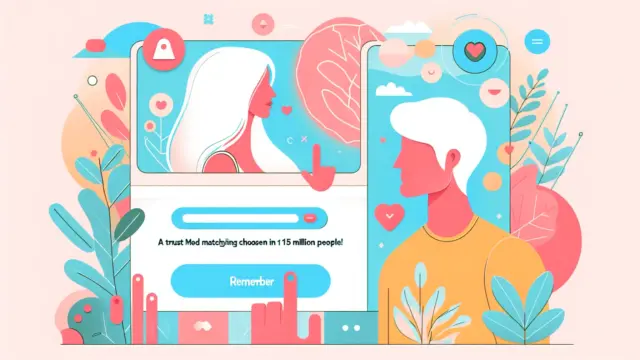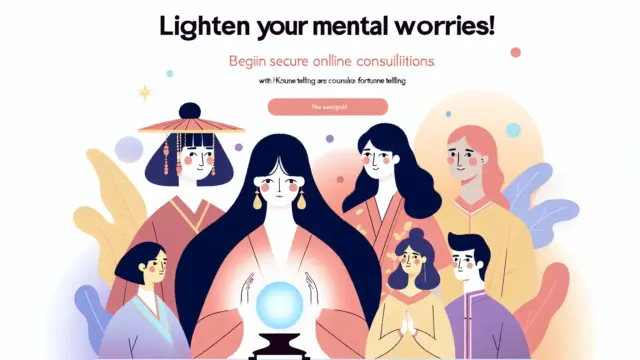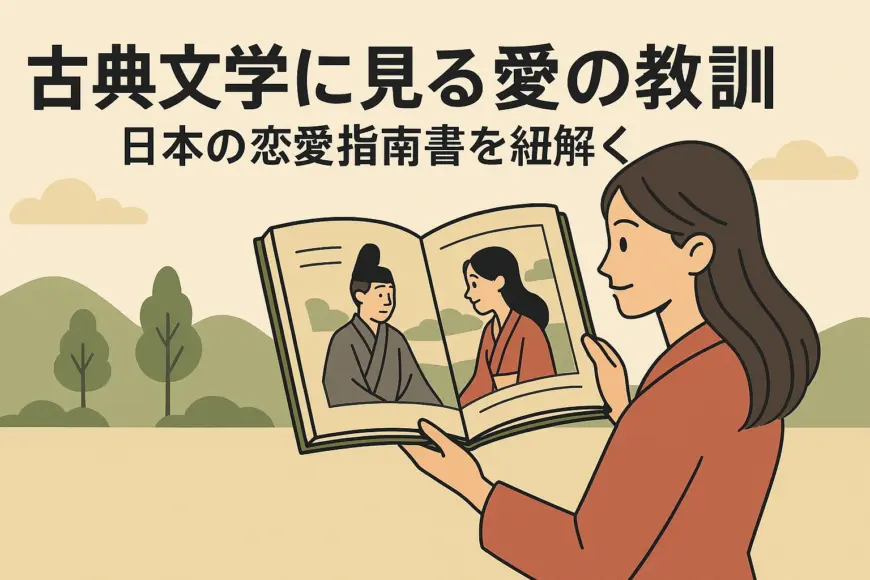Japanese classical literature is rich with timeless insights into love and romance.
From the Heian to the Edo period, numerous love manuals and literary works emerged, each depicting a unique perspective on romance.
Through these works, we can glean valuable lessons that are still relevant today.
For instance, “The Tale of Genji” and “The Pillow Book” vividly portray the love dynamics of aristocratic society in the Heian period.
In contrast, “Essays in Idleness” and “An Account of My Hut” reflect the philosophical views on love during the Kamakura and Muromachi periods.
By the Edo period, works like “The Life of an Amorous Man” and Ukiyo-e art pursued more realistic and popular expressions of love.
Even in modern times, there is much to learn from these classical works about love.
Understanding the evolution of Japanese love culture over the centuries can enrich our own perspectives on romance today.
- Explore love manuals from the Heian to Edo periods
- Romantic views depicted in works like “The Tale of Genji” and “The Pillow Book”
- Lessons from classical literature applicable to modern love
Exploring Love Manuals of the Heian Period
The Heian period is known for its flourishing Japanese romance culture.
Nobles expressed their delicate romantic feelings through poetry and letters, resulting in the birth of many literary works.
Let’s delve deeper into the romantic views of the time through “The Tale of Genji” and “The Pillow Book.”
The Romantic View in ‘The Tale of Genji’
“The Tale of Genji,” written by Murasaki Shikibu, portrays the romantic intricacies of Heian aristocratic society.
In this work, various complex human relationships are depicted through the protagonist, Hikaru Genji.
His view on romance teaches us the importance of building long-term relationships, rather than mere momentary passion.
- Hikaru Genji is portrayed as the ideal lover
- Romance is influenced by social status and family background
- Delicate emotional expressions are one of the work’s charms
Genji’s romantic experiences are insightful even for us today.
Perhaps valuing the heart of the partner, as he did, leads to true love.
Love Lessons from ‘The Pillow Book’
On the other hand, “The Pillow Book,” written by Sei Shonagon, is an essay focusing on observations of daily and court life, with many references to romance.
Her perspective is unique, mixing humor and irony, providing a glimpse into one aspect of romance at the time.
- Romance is portrayed as part of everyday life
- Sei Shonagon’s keen observation and insight shine
- Characteristic humorous view on romance
“The Pillow Book” offers us a chance to think about romance in a lighter yet deeper way.
Through its unique perspective, we might also discover new forms of love.
Love Literature of the Kamakura and Muromachi Periods
The Kamakura and Muromachi periods were times when new values emerged alongside the rise of the samurai class.
Love literature from this era often reflects on human relationships from everyday and philosophical perspectives.
Let’s delve into the love views of the time through “Essays in Idleness” and “An Account of My Hut.”
The Philosophy of Love in “Essays in Idleness”
“Essays in Idleness,” written by Yoshida Kenko, is an essay collection offering a glimpse into the thoughts and values of the Kamakura period.
In this work, love is considered an integral part of life, with profound philosophical reflections.
The contents related to love are diverse, offering lessons that resonate even today.
- Love is perceived as a part of life
- Describes the transience and changeability of human relationships
- Offers many timeless lessons on love
Thus, “Essays in Idleness” provides an opportunity to deeply contemplate life through the lens of love.
Its philosophical perspective can bring new insights to us as well.
Human Relationships in “An Account of My Hut”
“An Account of My Hut,” an essay by Kamo no Chomei, strongly reflects themes of impermanence and life views.
This work also examines human relationships and love, providing insights into the values of the time.
The human relationships depicted in “An Account of My Hut” reflect the unchanging essence of humanity over time.
- Expresses a strong sense of impermanence
- Depicts changes and the essence of human relationships
- Offers life views through the lens of love
Through this work, one can sense the timeless nature of human essence and the power of love.
“An Account of My Hut” prompts us to consider the universal nature of human relationships.
Love Guides and Culture of the Edo Period
The Edo period was a time when Japanese culture flourished, and love also evolved as part of this cultural expansion.
During this era, many literary works and ukiyo-e prints themed around love were created and widely embraced by the common people.
Let’s explore the love perspectives of the Edo period through “The Life of an Amorous Man” and ukiyo-e.
The Love Theories in “The Life of an Amorous Man”
“The Life of an Amorous Man,” written by Ihara Saikaku, portrays the romantic adventures of its protagonist, reflecting the love views of that time.
While love is depicted as a fleeting pleasure, the complexity of human relationships is also expressed.
The humorous perspective on love is another noteworthy aspect of this work.
- Love depicted as a fleeting pleasure
- Highlights the complexity of human relationships
- Humorous perspective is a key feature
Reading this work provides a clear understanding of how love perspectives were shaped and developed during the Edo period.
Many aspects of it resonate with modern times, offering us valuable insights.
Ukiyo-e and the Expression of Love
Ukiyo-e, a prominent art form of the Edo period, frequently featured love as a significant theme.
These artworks vividly depicted the romantic scenes of the common people, allowing for visual enjoyment.
Their expressions were often bold and satirical.
- Many works themed around love
- Realistically depict the lives and emotions of common people
- Bold and satirical expressions are characteristic
Through ukiyo-e, we can learn how love and life were portrayed during that time.
Such visual arts transcend time and culture, providing us with fresh discoveries.
Learning from Classical Literature in Modern Love
Classical literature holds timeless lessons of love that continue to move people’s hearts across ages.
Let’s explore how these works can be applied to modern romance and how Japanese love culture has evolved over time.
By embracing the wisdom of the classics, we may gain new perspectives in our romantic lives.
Applying Classical Love Perspectives to Modern Times
The perspectives on love depicted in classical literature offer many insights for us today.
For instance, the delicate emotional expressions found in “The Tale of Genji” resonate with modern communication.
Additionally, the view of love as part of life, as seen in “Tsurezuregusa,” can help us find new values in our daily interactions.
- Cherish delicate emotional expressions
- View love as an integral part of life
- Apply classical wisdom to modern communication
By applying these lessons to the present, we can find keys to building deeper human connections.
Rediscovering the charm of classical literature can bring fresh insights into our everyday lives.
The Evolution of Japanese Love Culture
Japanese love culture has undergone significant changes over the ages.
In the Edo period, love was expressed through ukiyo-e and literary works, while today, social media and digital platforms set the stage for romance.
These changes illustrate how the nature of love has diversified alongside societal evolution.
- Edo period love expressed through ukiyo-e and literature
- Modern romance thrives on social media and digital platforms
- Love’s diversification reflects societal progress
Understanding the evolution of love culture helps us become more adaptable and flexible in our romantic views.
By examining Japanese love culture from the classics to the present, we open ourselves to new discoveries.
Conclusion
The lessons of love depicted in classical literature continue to provide us with valuable insights across time.
Each era, from the delicate emotional expressions of the Heian period to the philosophical views of love in the Kamakura and Muromachi periods, and the popular love culture of the Edo period, offers unique perspectives.
By applying these perspectives to the present, we might find clues to building richer human relationships.
- Heian literature emphasizes delicate emotional expression
- Kamakura and Muromachi periods view love philosophically
- Edo period sees the development of a popular love culture
The timeless lessons of love can offer us new realizations even today.
We’d love to hear how these insights have influenced your own views on love, so please share your thoughts in the comments!









Comment